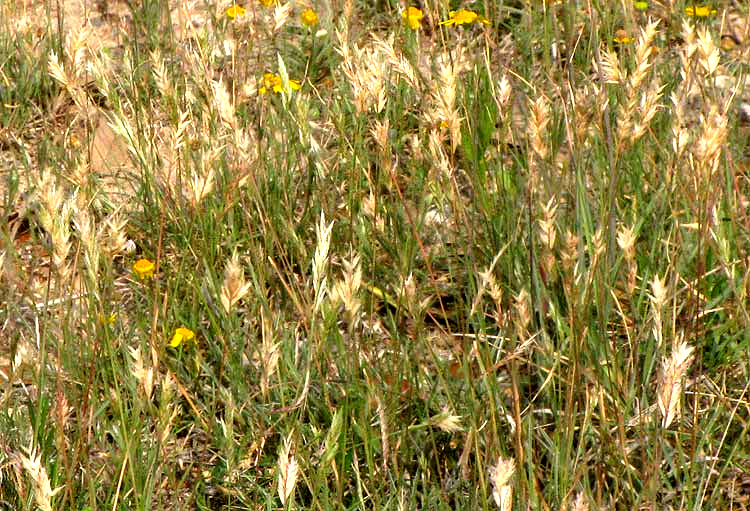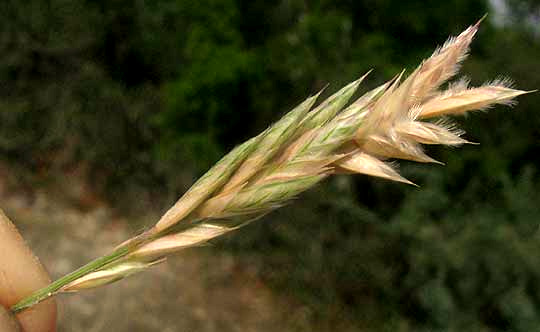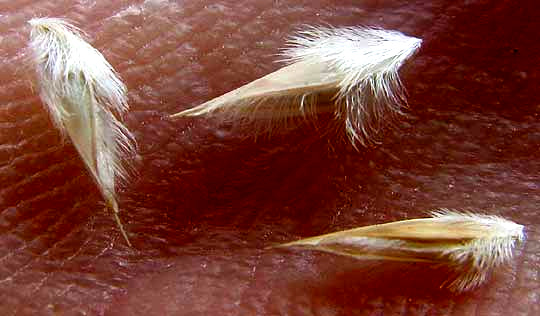Excerpts from Jim Conrad's
Naturalist Newsletter

from the May 26, 2013 Newsletter issued from the Frio Canyon Nature Education Center in northern Uvalde County, southwestern Texas, on the southern border of the Edwards Plateau; elevation ~1750m (~5750 ft); N29.62°, W99.86°; USA
HAIRY WOOLLYGRASS
Along an isolated gravel road where the soil was so thin and hard-baked that only ankle-high vegetation could get a foothold, there was a house-size community of closely growing together short grasses. They caught my eye because their flower clusters, or inflorescences, were oversized for such a short grass, and this early in the season the inflorescences were already maturing to a pale dun color. The relatively large, straw-colored flowering heads atop green grass looked a little funny, like a young man with gray hair. You can see the effect at the top of this page.
The inch-tall (3cm) flowering heads, which were spikelike panicles, also were a little odd looking, blousy at the top but compact below, as shown below:

If you look at that picture closely you see that the panicle expands at the top because the topmost spikelets have matured but those at the bottom are still green. Florets in spikelets at the top are enlarging and developing long hairs in preparation for breaking away from the spikelet.
This quirky little grass is known mostly by the redundant name of Hairy Woollygrass. It's ERIONEURON PILOSUM, found in the southwestern quarter of the US and in arid zones throughout most of Mexico, plus there's an isolated, or "disjunct," population in Argentina.
In Hairy Woollygrass, instead of the florets opening up to release their caryopsis-type fruits, or grains, the florets remain intact but come loose as a unit from the stem bearing the florets -- they disarticulate from the rachilla -- and then wind catches in the florets' fuzz and helps them disseminate. Below you can see some loose florets with their woolly parachute-hairs:

Seed-eating birds such as our abundant Lark Sparrows feed on these grains but I think the main ecological service this tufted, perennial grass provides is to flourish in soil that's too thin and dry to support other species. If our current severe drought and hotter-than-average summer continues, Hairy Woollygrass may prove to be one of the most important organisms holding our dusty soil in place.